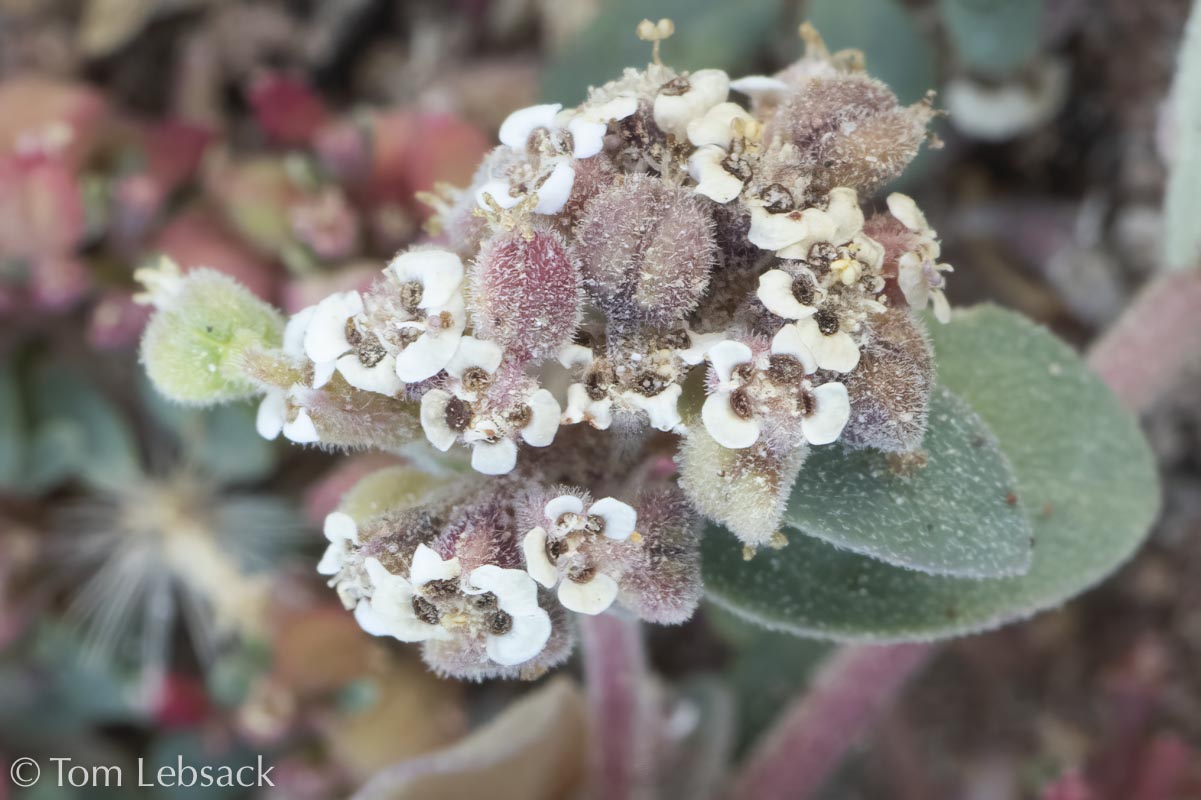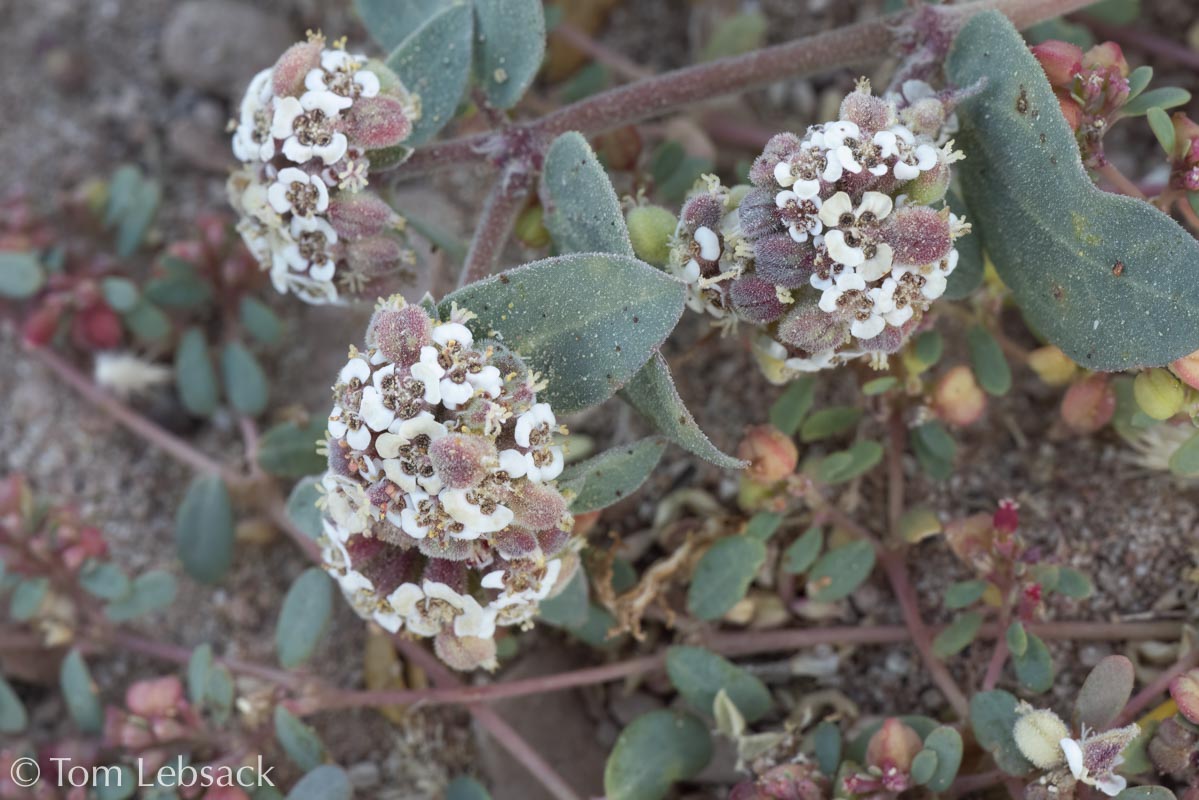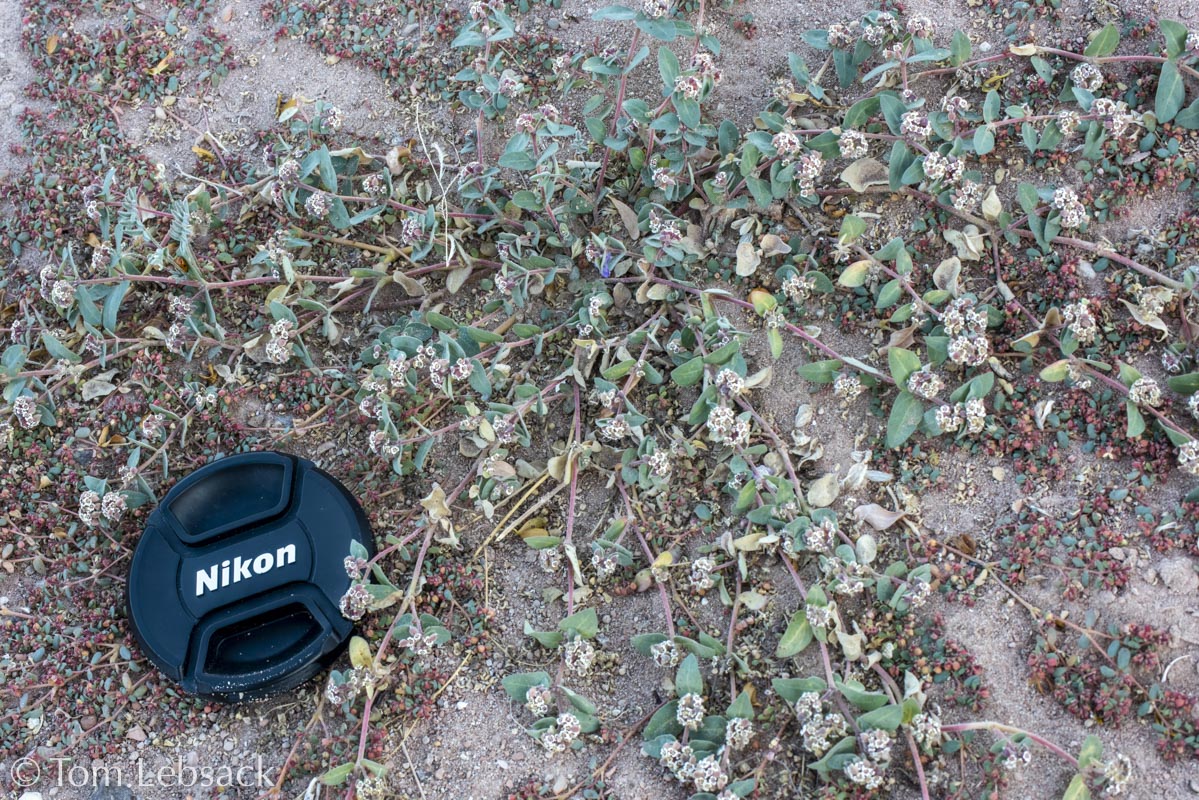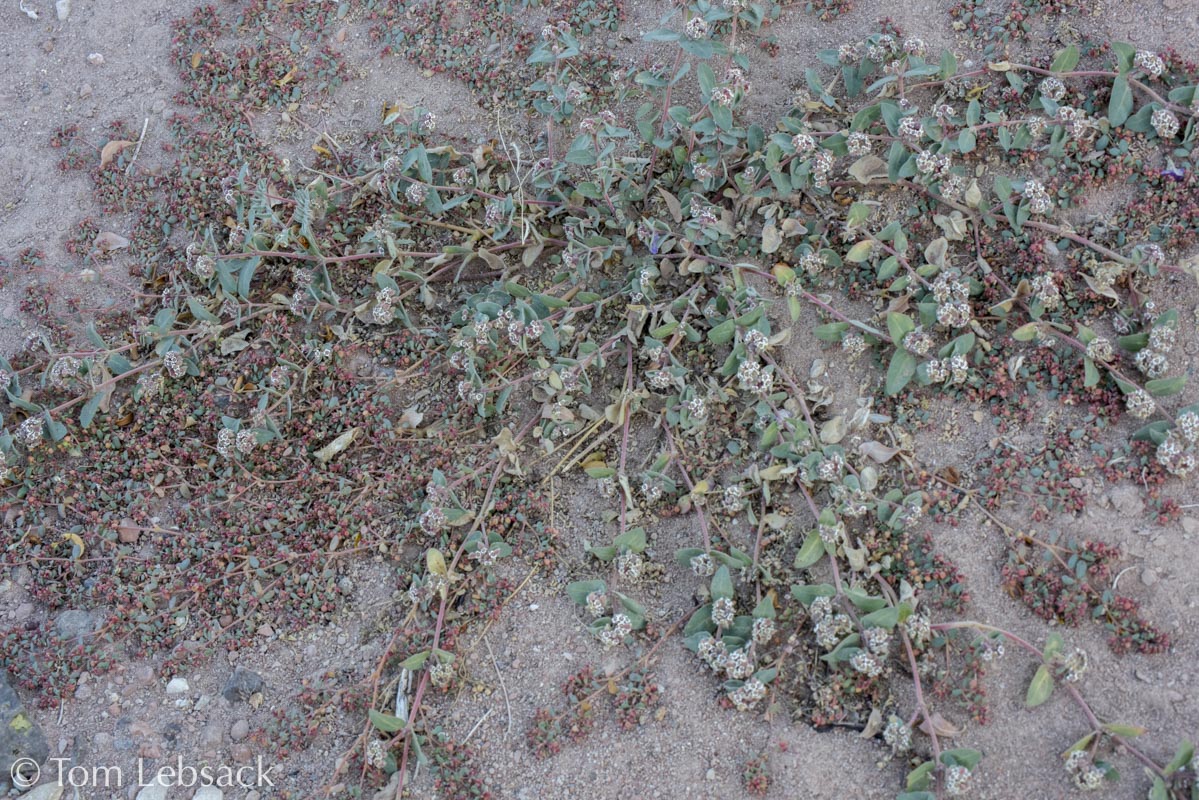Texas Wildbuds
Euphorbia capitellata
(Head Sandmat)
| Scientific Name | Euphorbia capitellata (Chamaesyce capitellata, Chamaesyce pycnanthema) | USDA PLANTS Symbol | CHCA29 |
| Common Name | Head Sandmat | ITIS Taxonomic Serial No. | 28050 |
| Family | Euphorbiaceae (Spurge) | SEINet Reference |
Click Here |
| Description | Habitat: Dry areas in gravelly washes, rocky slopes, basaltic talus, disturbed roadsides, desert scrub and grasslands; 1,500 to 5,000 ft. Plant: Decumbent to erect annual or short-lived perennial a few inches tall with many (5 to 50) slightly hairy to smooth, somewhat branched, stems up to 14 inches long. Leaves: Opposite,ovate to narrowly ovate, 3/16 to 1 inch long, with asymmetrical bases and acute to obtuse tips; lower margins are serrate, upper are entire, or sometimes both are the same; surfaces are gray-green, smooth or sparsely covered with short hairs. Inflorescence: Dense, ball-shaped clusters of very small (appearing to be about 1/8-inch across or less) cyathia at the upper leaf axils; cyathia have a reddish, bell-shaped involucre ringed by white "petals" (actually called "appendages") surrounding 4 yellow-green to reddish nectar glands at thei bases; each cyathium with many staminate flowers (stamens and anthers) and one pistillate flower (the ovary) that is smooth or fuzzy with a protruding stigma with 3 styles, each with 2 whitish lobes. Fruit: Smooth to hairy, tiny, broadly oval-shaped, ~1/16-inch long and as wide. Bloom Period: April to November. References: Flora of North America and SEINet; Euphorbia pycnanthema in "Manual of the Vascular Plants of Texas" by Correll and Johnston. |
BONAP Distribution Map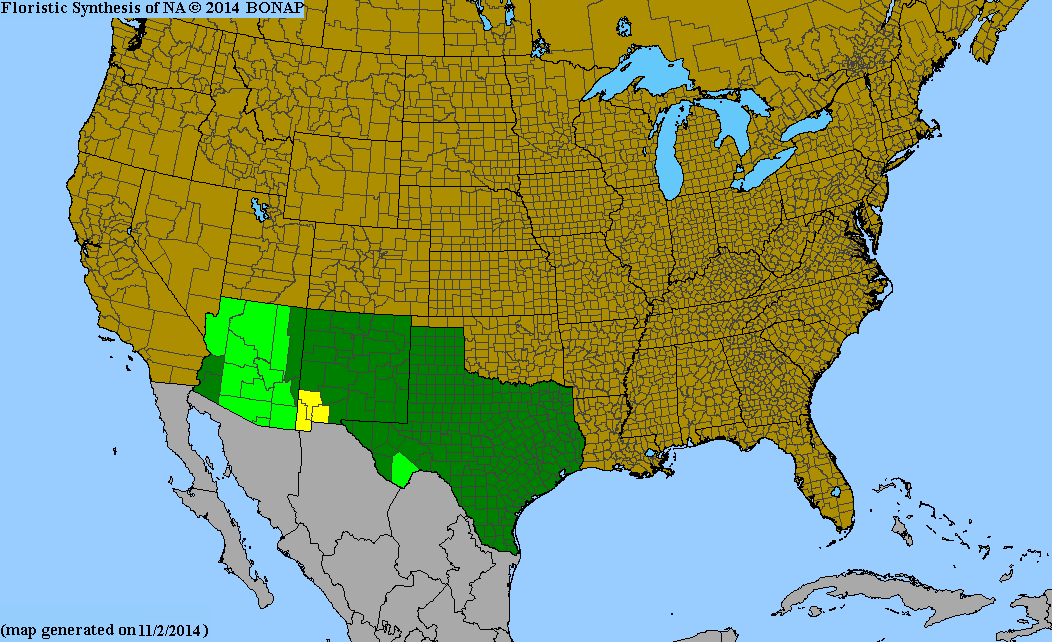 Map Color Key |
Texas Status: Native |
Banner photo of Castilleja indivisa and Lupinus ssp. taken along FM 1323 north of Johnson City, Blanco County
© Tom Lebsack 2025
Every attempt is made to provide accurate, up-to-date, and relevant information, but the completeness or accuracy of any information presented on this website cannot be guaranteed. I use authoritative references to insure high standards of accuracy and review and update the information frequently.

